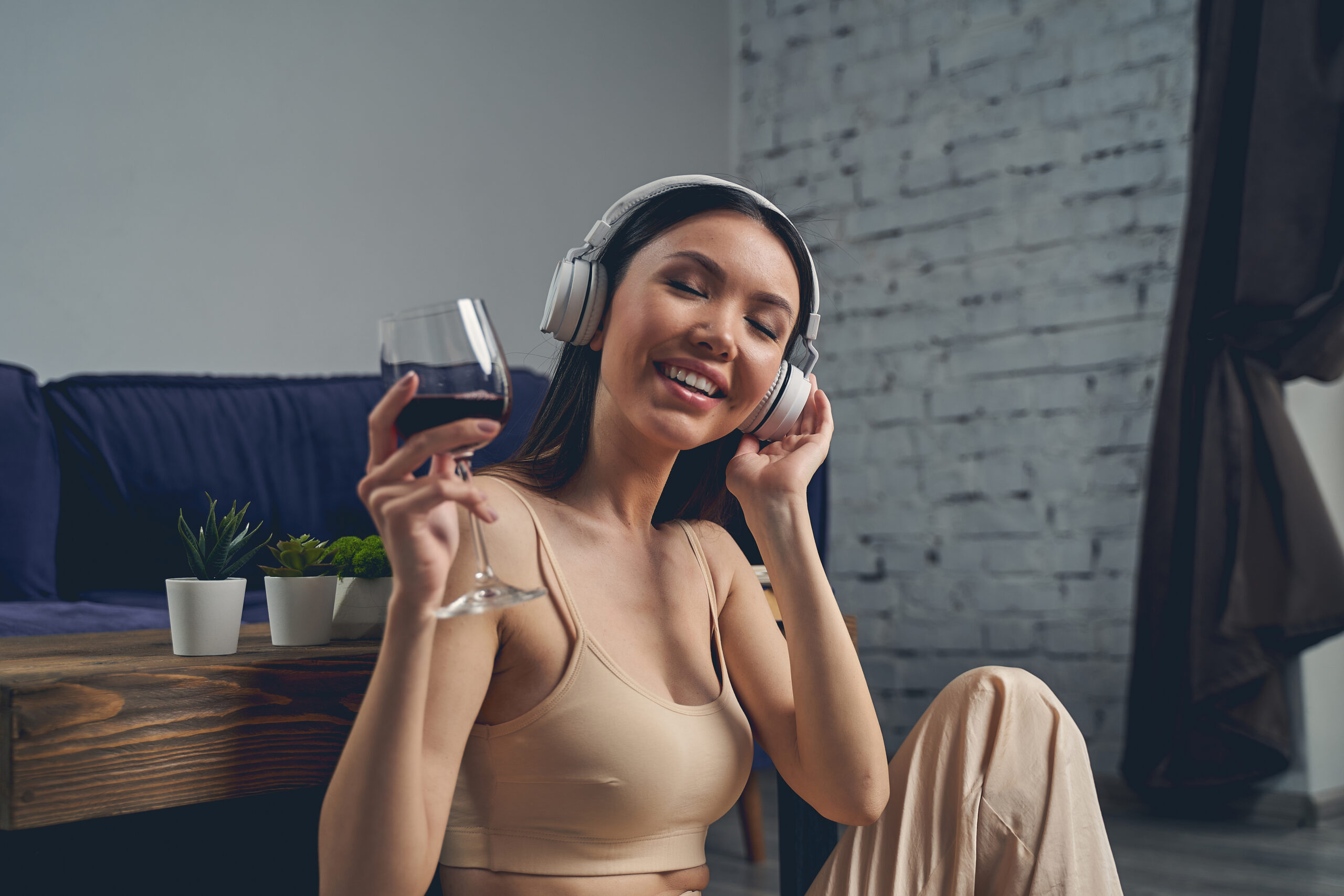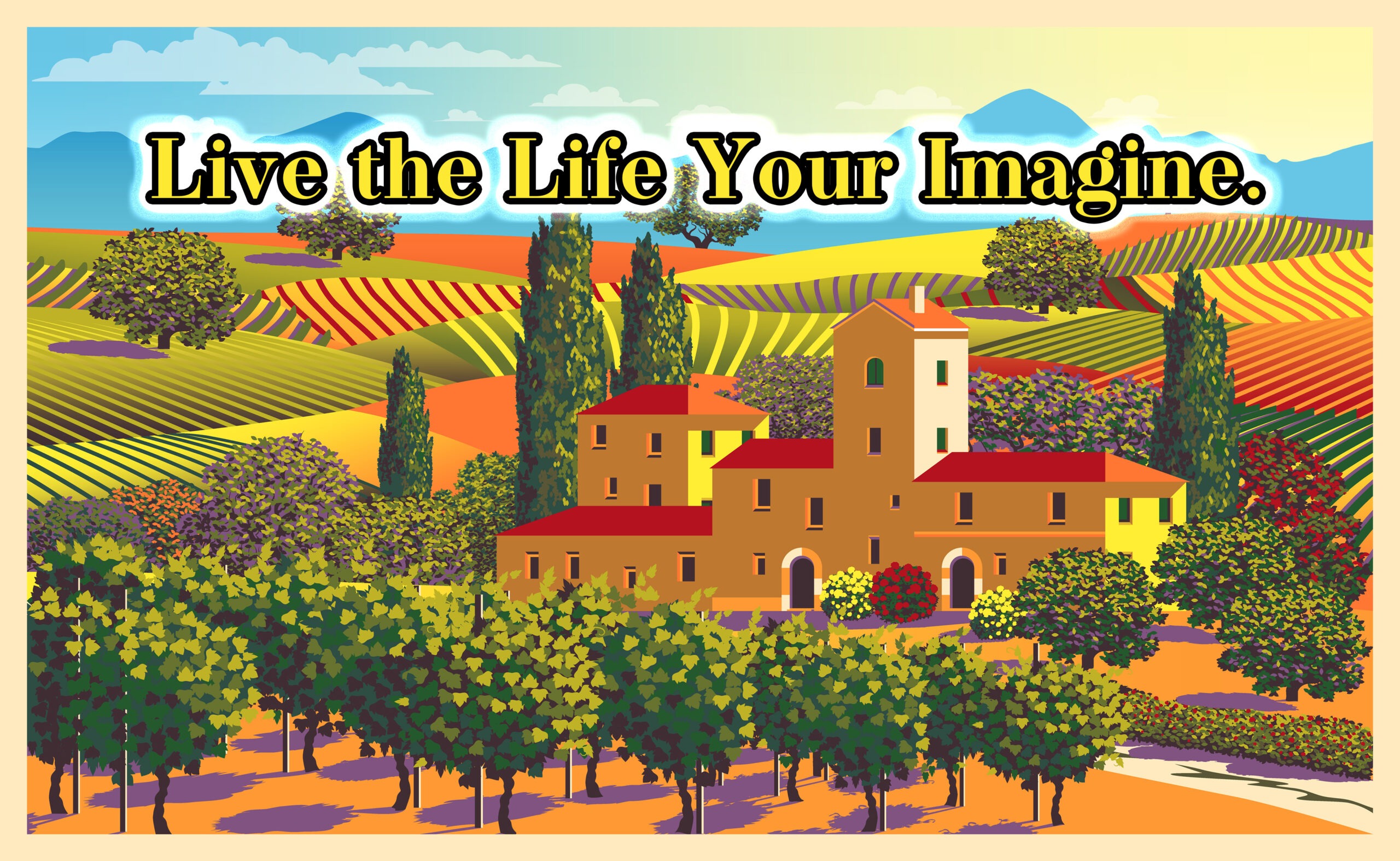I’d like to share with you 8 things that have the potential to significantly improve your wine drinking experience and that of your wine-drinking guests. I’m sharing this information because it happens to the best of us… Let’s call it: “WINE LOVER’S REMORSE.” It’s when pricey bottles of wine purchased at the winery just don’t seem as exciting as they were when you were standing in the tasting room talking about terroir, vintages and varietals. That wine couldn’t have been more delicious and you were determined to score a case of it, even if you had to give up lattes for six months to help pay for it.
So, what happened? How could something that was so irresistible just a few days before suddenly be singularly unimpressive? Actually, it may not be a problem with the wine. Instead, your disappointment could be the result of a variety of other factors that can have a profound impact on your Wine enjoyment. Once you understand them, there’s a lot you can do to turn something bad into something good, and something good into something great.
1) RAISING EXPECTATIONS CAN IMPROVE THE TASTE OF WINE
 If someone whom you consider to be credible tells you that the wine you are about to taste is not the least bit pleasant, no matter how good it might be, chances are your lowered expectations will have you primed for an underwhelming experience. Conversely, if you are told that a wine has received rave reviews from critics, you will probably like it even if it is actually less than stellar.
If someone whom you consider to be credible tells you that the wine you are about to taste is not the least bit pleasant, no matter how good it might be, chances are your lowered expectations will have you primed for an underwhelming experience. Conversely, if you are told that a wine has received rave reviews from critics, you will probably like it even if it is actually less than stellar.
Now, if you fancy yourself as something of a wine aficionado, you may take exception to the notion that you are vulnerable to the power of suggestion. But while there are certainly those among us who cannot be swayed by glowing misrepresentations, even highly capable wine critics have been known to succumb to suggestion.
In a rather devious study by researcher Frédérlc Brochet of the University of Bordeaux, a group of wine experts was served wines from two different bottles. The first bottle was labeled as an exceptional grand cru; the second was a rather modest table wine. Predictably, the pricey grand cru received rave reviews filled with glowing adjectives. The experts largely panned the lowly table wine, calling it “flat, light, weak and faulty.” This may not seem surprising, except the two wines served were exactly the same. There’s something perversely pleasurable about seeing an expert with egg on his or her face!
There are two lessons to be learned here. First, don’t let reviews rule your life. Second, use the power of suggestion to your advantage. If you’re serving wine to guests, talk it up. You might be able to earn rave reviews without breaking the bank.
2) EXPENSIVE TASTES BETTER
Speaking of breaking the bank, there is little doubt that a high price tag can significantly-influence our perception of quality. But is a $100 bottle of wine really better than a $25 bottle of wine? A study by the California Institute of Technology gives us plenty to ponder.
Similar to the Brochet study, Cal Tech researchers gave members of a study group the exact same wine in two different bottles. Subjects were told that the wines sold for drastically different prices. You guessed it: The study participants showed an overwhelming preference for what they
thought was “the good stuff.”
A new science known as neuro-economics seeks to understand the subconscious appeal of luxury products. During their experiments, the Cal Tech researchers monitored brain activity in the medial orbitofrontal cortex of their subjects. This part of the brain plays a key role in our experience of pleasure. Remarkably, the cortex became quite active when subjects were told that the wine they were consuming was expensive.
Hence, if you want to make sure that the wine you are serving gets resounding approval, you might want to use one of these lines (and you don’t even have to lie):
- “I hope you like this wine. Money was no object.”
- “It was beyond my budget, but when I tasted it I just had to buy it for you.”
3) SERVE UP CLASS IN THE RIGHT GLASS
Drinking wine from the right glass can make a big difference, but that doesn’t mean you need to invest in Waterford Crystal. It just means that you should give a little thought to the shape of things.
 Wine glasses are designed so that the shape of the bowl and rim expose more or less of the wine to the air, concentrating or dissipating aroma and bouquet. The shape of a wine glass can also affect how and where different wines come into contact with your palate.
Wine glasses are designed so that the shape of the bowl and rim expose more or less of the wine to the air, concentrating or dissipating aroma and bouquet. The shape of a wine glass can also affect how and where different wines come into contact with your palate.
Red wines should be served in a glass that has a bigger bowl and a wider opening—allowing you to experience more of the wine’s aroma. Whites should be served in a glass with anarrower bowl and a smaller opening to help the wine stay cooler and preserve its more delicate aromas. As for
Champagne, never serve it in those wide-mouth glasses you might see at weddings. (Aren’t those almost martini glasses?) Champagne should always be served in a tall, narrow glass to keep the bubbles from dissipating prematurely.
4) NOT TOO HOT. NOT TOO COLD
If there is one safe generalization we can make about how wine is served, it is this: White wines are generally served too cold and red wines are served too warm.
When it comes to wine, temperature is a big deal. So here’s what you need to know: If it has bubbles, serve it chilled (unless you’re pouring it into your bathtub). Chill champagne and sparkling wines in the refrigerator for about 1—1/2 hours, or in an ice bucket that also contains
water for 20 minutes. Before serving, let the bubbly warm up just a bit—especially higher-end vintages.
- Sauvignon Blanc, Pinot Grigio, white Zinfandel and other refreshing, sweet or crisp white wines should also be refrigerated to about 35 or 40 degrees.
- Chardonnay, White Burgundy and other full-bodied, barrel—fermented white wines should be served warmer—at about 55 degrees. If you don’t have a cellar. put them in the refrigerator for an hour or two and then bring them out to warm up for about 20 minutes.
- Almost all red wines are at their best at 65 degrees—neither cold nor room temperature. For best results. Refrigerate them for a few minutes before serving.
Unfortunately, some things can’t be controlled as easily. A room’s temperature, humidity and even barometric pressure can also affect the way a wine tastes. The exact same bottle of wine can taste appreciably different in Houston versus Seattle. It’s a good thing to know, but a hard thing to control.
5) WATCH WHAT YOU PUT IN YOUR MOUTH!
When foodies and wine lovers talk about wine pairings, they generally focus on what wines and foods best complement one another. What is seldom talked about is food and wine pairings to avoid.
Here’s the biggest “don’t” of them all: Never put anything minty in your mouth if you’re going to be drinking wine. No gum, mints or peppermint anything.
Vinegar is almost equally bad. Vinegar is the anti-wine and will make even the best wines taste unpleasant. Don’t eat anything with vinegar when drinking wine. No vinegar in the salad dressing or marinade. Nothing pickled. If you’re looking for a light dressing, why not substitute real wine for the vinegar—or play it safe with ranch? lf mint, vinegar or other strong flavors are unavoidable, do yourself a favor and eat a cracker or a piece of white bread before your first sip. Simple and oh, so effective!
6) DOES YOUR TASTE IN MUSIC MATCH YOUR TASTE IN WINE?
Some people go to a lot of trouble to create just the right ambience. Ambience does matter. But the relationship between wine and music is even more significant than you might think. That was the conclusion of a study at Herriot-Watt University in Edinburgh.
Conducted on behalf of renowned Chilean Winemaker Aurelio Montes, the Edinburgh researchers discovered that the style of music played had a dramatic impact on the study groups’ perception of wines they were served. For instance, when a powerful, heavy piece of music is played, big red wines such as Cabernet Sauvignon and other bold Bordeaux wines are perceived as being as much as 60% more powerful, rich and robust. Conversely, white wines were rated 40% more “zingy and refreshing” when “zingy and refreshing” music was played.
The folks at Montes Wines have even suggested a few wine and music pairings that you might want to experiment with:
- Cabernet Sauvignon: “All Along the Watchtower “(Jimi Hendrix), Honky-Tonk Women” (Rolling Stones). “Live and Let Die” (Paul McCartney and Wings), “Won’t Get Fooled
- Again” (The Who).
- Chardonnay: “Atomic” (Blondie), “Rock DJ” (Robbie Williams). “What‘s Love Got to do With it” (Tina Turner), “Spinning Around” (Kylie Minogue).
- Syrah: “Nessun Dorma” (Puccini), “Orinoco Flow” (Enya), “Chariots of Fire” (Vangelis), “Canon in D” (Pachelbel).
- Merlot: “Sitting on The Dock of The Bay” (Otis Redding), “Easy” (Lionel Ritchie), “Over the Rainbow” (Eva Cassidy), “Heartbeats” (Jose Gonzalez).
7) COLORING YOUR WINE PERCEPTION
It has long been accepted that the color of a drink affects our perception of taste, which is probably why so much food coloring is used in the production of soft drinks. Color is most certainly one of the things tasters consider when sampling wine.
But how do the colors in the room affect us? Researchers in Mainz, Germany, at Johannes Gutenberg University wanted to see if the color of ambient lighting had an impact on our perception of wine’s taste.
To make sure the wine’s actual color wasn’t a factor, the researchers served a Riesling in black glasses. Next, test subjects were put in a room with ambient colored lighting and asked to evaluate the wine.
Dr. Oberfeld-Twistel, who conducted the study, suspected some colors could make people more responsive to certain sensory input. In fact, study participants found the Riesling to be much tastier when they were exposed to blue or red background lighting. Green and white lighting had the opposite effect.
So why not add some blue and red to the table setting, along with a bouquet of red roses? Change the table linens to a more complementary shade and, while you don’t have to paint the walls, you can certainly experiment with colored light bulbs.
8) THE WRONG AROMAS CAN MAKE WINE STINK
For centuries, the general consensus has been that wine-tasting rooms should be devoid of any smell except the wine itself. That’s because conflicting scents can really disrupt the senses. But now, a study conducted by Oregon State University and sponsored by Bridgeview Vineyard and
Winery has sniffed out some interesting new possibilities.
According to the researchers, manipulating the smells in a room could be the key to making a wine more enjoyable. For instance, a wine perceived as too sweet or fruity can be made much more likable by adding sweet, spicy or fruity fragrance to the room. That’s because adding an ambient scent complementary to an overly dominant characteristic in a wine can actually make the wine more pleasant. For instance, a Merlot with strong spicy notes might be regarded as too strong to be likable. But if you add a complementary spicy aroma to the room, the spicy note becomes likable. Yes, that bottle of Old Spice could come in really handy!
WHAT HAVE WE LEARNED?
Wine is a very complex consumable; rich with nuances that work together to give us enormous pleasure. Unfortunately, those same nuances are tremendously vulnerable to a host of both environmental and psychological factors. Being aware of some of these factors can empower you to enhance your wine enjoyment in a significant way. One final word of caution. Overthinking it might be the very worst thing you can do.











More Stories
No! Wine Does NOT Turn to Vinegar!
Abruzzo Winemaker is Making History by Remaking History!
Airplane Wine Gets an Altitude Adjustment!